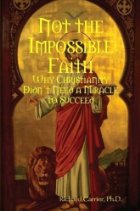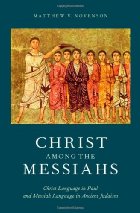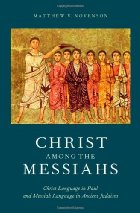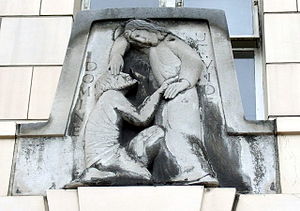*
Bart Ehrman vs. Earl Doherty
.
 COVERED IN THIS POST:
COVERED IN THIS POST:
- Using previous scholarship with a different end result
- Ehrman’s numerous misreadings and misrepresentations of my text
- Platonic (and other) ancient views of the universe
- What was the interpretation of the cultic myths:
- allegorical or literal, heavenly or earthly?
- among the philosophers?
- among the devotees of the cult?
- among the common people?
- Revisiting 1 Thessalonians 2:15-16
- Revisiting “the rulers of this age”
- Was the Christ cult Jewish or Greek—or both?
- Jewish sectarian thinking moves upward
- Was Pauline Christianity “Aramaic rural Palestinian Judaism”?
- Must Christ have shed his blood on earth?
- Problems and declarations
.
.
* * * * *
Was Jesus Crucified in the Spiritual Realm Rather Than on Earth?
(Did Jesus Exist? pp. 252-258)
.
The practice of drawing on previous scholarship
Ehrman calls me “one of the staunchest defenders of a mythicist view of Christ.” Well, that’s almost the only valid statement he makes about me in the entire book. He starts off with a complaint which has often cropped up in criticisms directed against me:
He quotes professional scholars at length when their views prove useful for developing aspects of his argument, but he fails to point out that not a single one of these scholars agrees with his overarching thesis. (DJE? p. 252)
First of all, I scarcely think I needed to point this out. What mainstream New Testament scholar subscribes to the mythicist theory, let alone that Paul regarded Christ as sacrificed in the heavenly realm? If any of these scholars I draw on had so believed, does Ehrman think I would not have trumpeted it to the skies? I was hardly concealing what anyone would assume was the historicist orientation of such scholars.
Ehrman’s motive in raising that fallacy is quite clearly to impugn to me some form of dishonest procedure.
More importantly, does Ehrman or anyone else regard it as illegitimate of me to draw on observations and conclusions on the part of established scholarship if they can be fitted into the context of my own argument? Mainstream scholars do that all the time. All of scholarship builds on the work of predecessors, and all of those predecessors are subject to reinterpretation and the reapplication of their work to the new conclusions of their successors. Besides, many of my references to the views of historicist scholars involve a clear indication that I make use of their observations in different ways than they do, with different end results.
Enough said on that fallacy. Ehrman’s motive in raising it is quite clearly to impugn to me some form of dishonest procedure.
.
Multiple views of the universe
.
This is not simply a misreading, it presents the exact opposite of what I actually say.
One of the “problems” Ehrman finds in my book is its main thesis:
One particular piece is especially unconvincing: in Doherty’s view, Paul (and other early Christians) believed that the Son of God had undergone a redeeming “‘blood’ sacrifice” not in this world but in a spiritual realm above it. (DJE? p. 252)
In the course of explaining why he is unconvinced, Ehrman makes a number of egregious misreadings of my text. (I know it is 800 pages, but it is still incumbent upon Ehrman to actually see the words as they stand on the page if he is going to find fault with them.) He says: Continue reading “Bart Ehrman vs. Earl Doherty. Part 29 of Earl Doherty’s Response to Bart Ehrman’s Case Against Mythicism”
Like this:
Like Loading...







